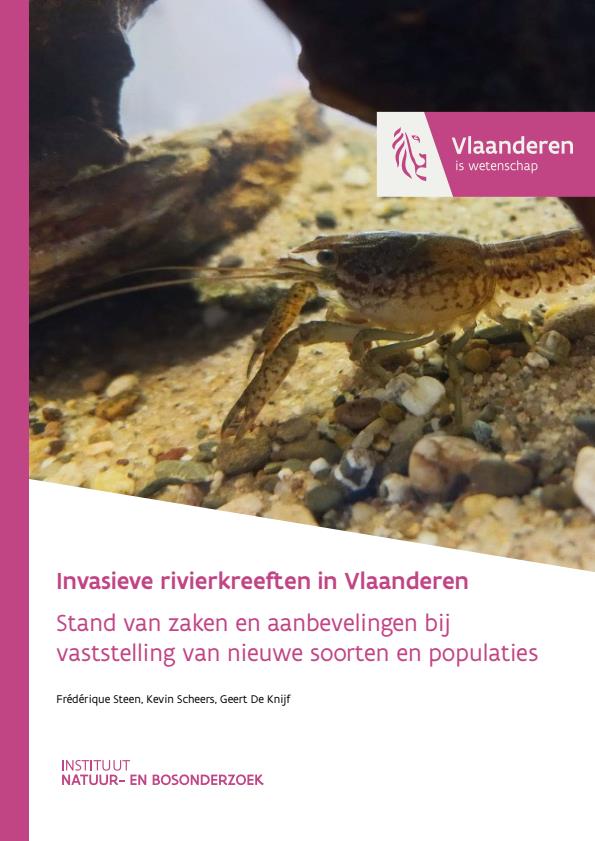Invasieve rivierkreeften in Vlaanderen: Stand van zaken en aanbevelingen bij vaststelling van nieuwe soorten en populaties
We provide an overview of the potential impact of non-native crayfish on both biota and the physical environment. For each of the non-native crayfish present, the distribution, main characteristics and introduction history in Flanders are explained. Species with potential to become established here are also discussed in detail.
The report aims to provide an initial impetus for crayfish management by proposing a plan of action differentiated according to the risk category of each of the individual crayfish species.
A systems-based approach is needed. By aiming for natural and resilient water systems, the balance can be restored. The objective here is to develop ecosystems capable of hosting crayfish predators including predatory fish (such as pike, eel, perch and European catfish). These are able to keep the density of crayfish low, thus reducing their impact.
Details
| Number of pages | 69 |
|---|---|
| Type | Reports of Research Institute for Nature and Forest |
| Category | Research |
| Language | Dutch |
Bibtex
@misc{82de8481-11fa-4464-ba46-f6fe8c6dbd30,
title = "Invasieve rivierkreeften in Vlaanderen: Stand van zaken en aanbevelingen bij vaststelling van nieuwe soorten en populaties",
abstract = "In recent years, we have seen an increasing number of reports on non-native invasive crayfish such as the marbled crayfish in Flanders.
We provide an overview of the potential impact of non-native crayfish on both biota and the physical environment. For each of the non-native crayfish present, the distribution, main characteristics and introduction history in Flanders are explained. Species with potential to become established here are also discussed in detail.
The report aims to provide an initial impetus for crayfish management by proposing a plan of action differentiated according to the risk category of each of the individual crayfish species.
A systems-based approach is needed. By aiming for natural and resilient water systems, the balance can be restored. The objective here is to develop ecosystems capable of hosting crayfish predators including predatory fish (such as pike, eel, perch and European catfish). These are able to keep the density of crayfish low, thus reducing their impact.",
author = "Frédérique Steen and Kevin Scheers and Geert De Knijf",
year = "2023",
month = jan,
day = "01",
doi = "https://doi.org/10.21436/inbor.93574172",
language = "English",
publisher = "Instituut voor Natuur- en Bosonderzoek",
address = "Belgium,
type = "Other"
}

